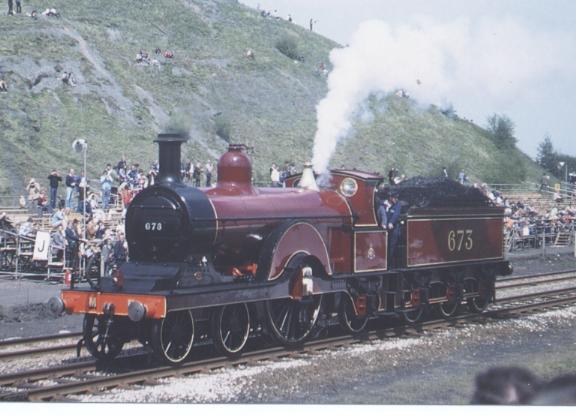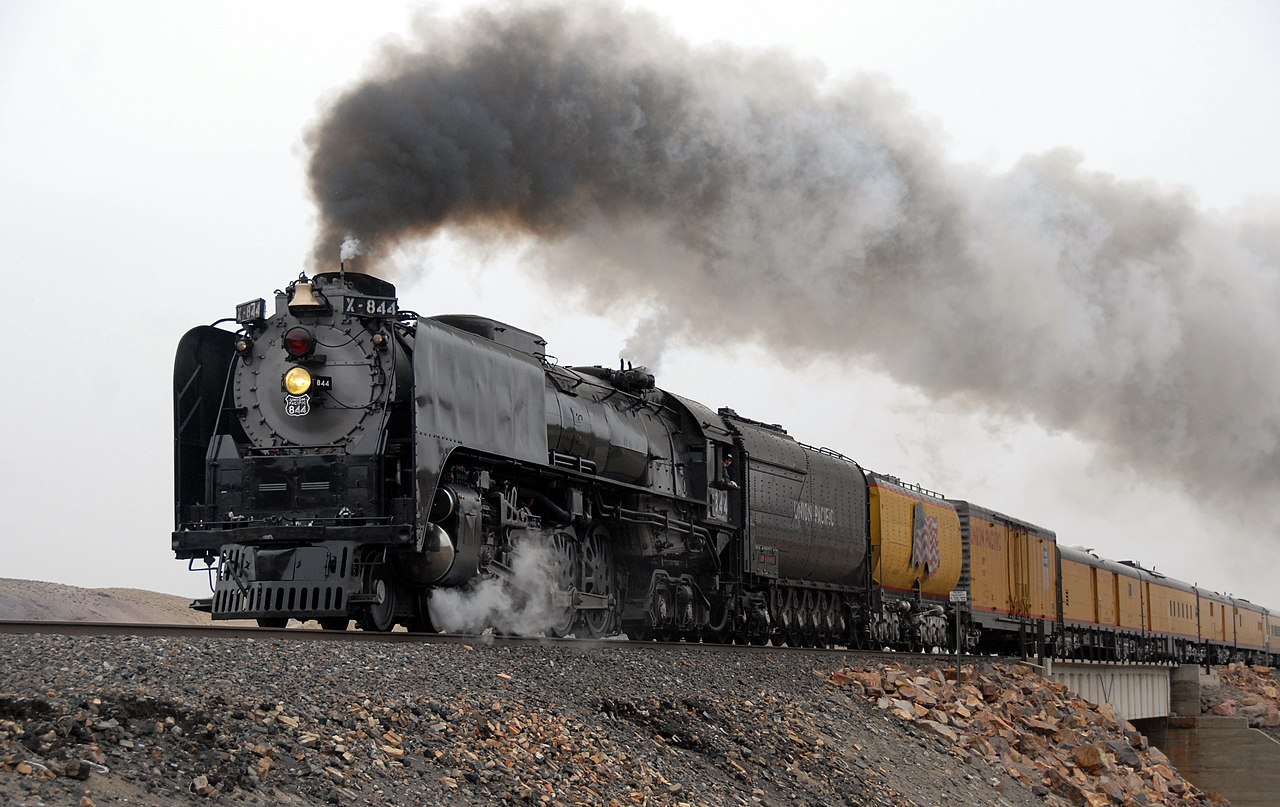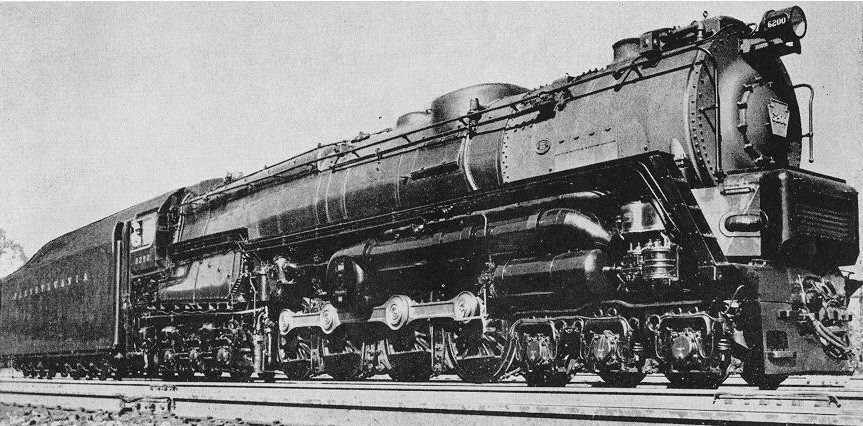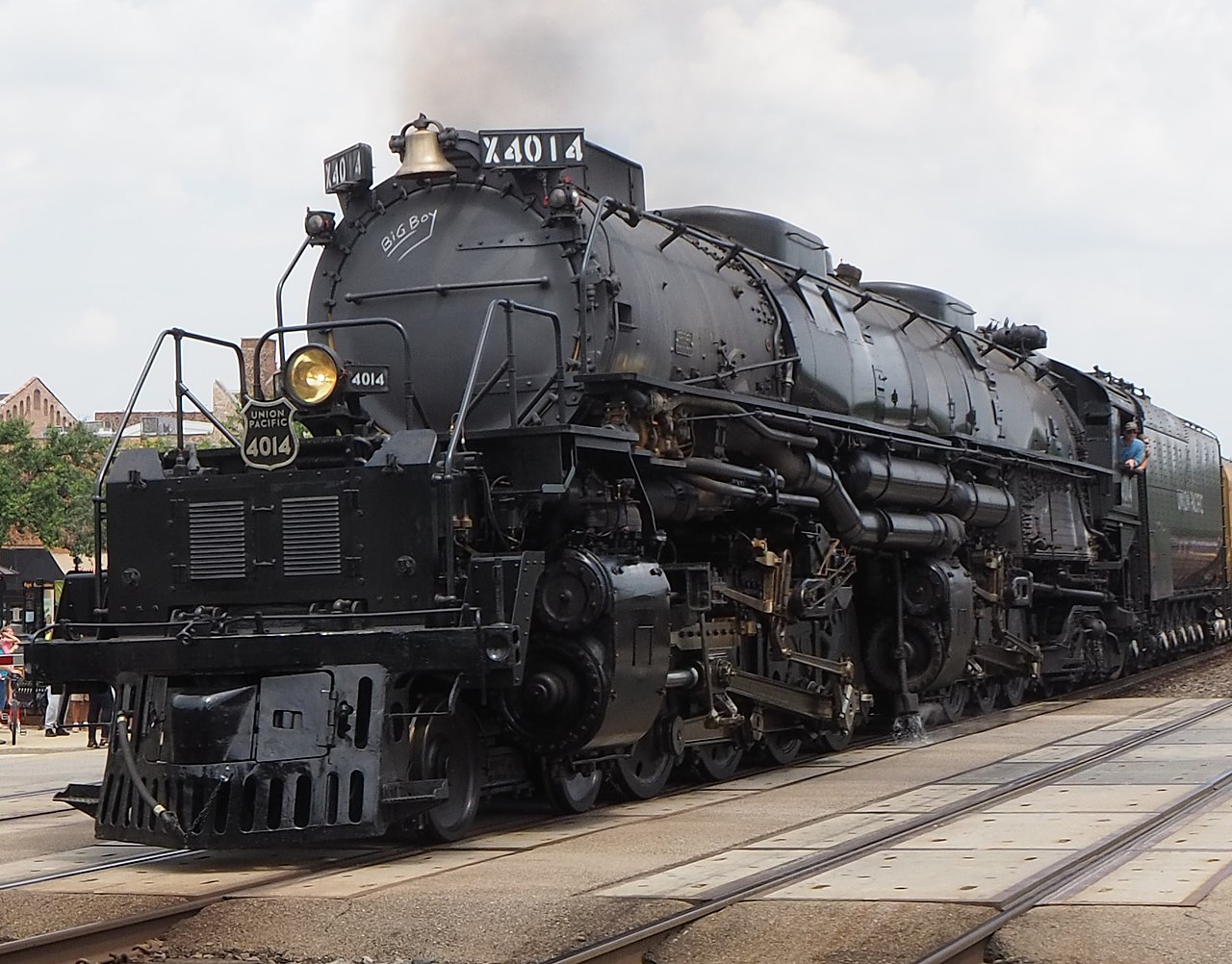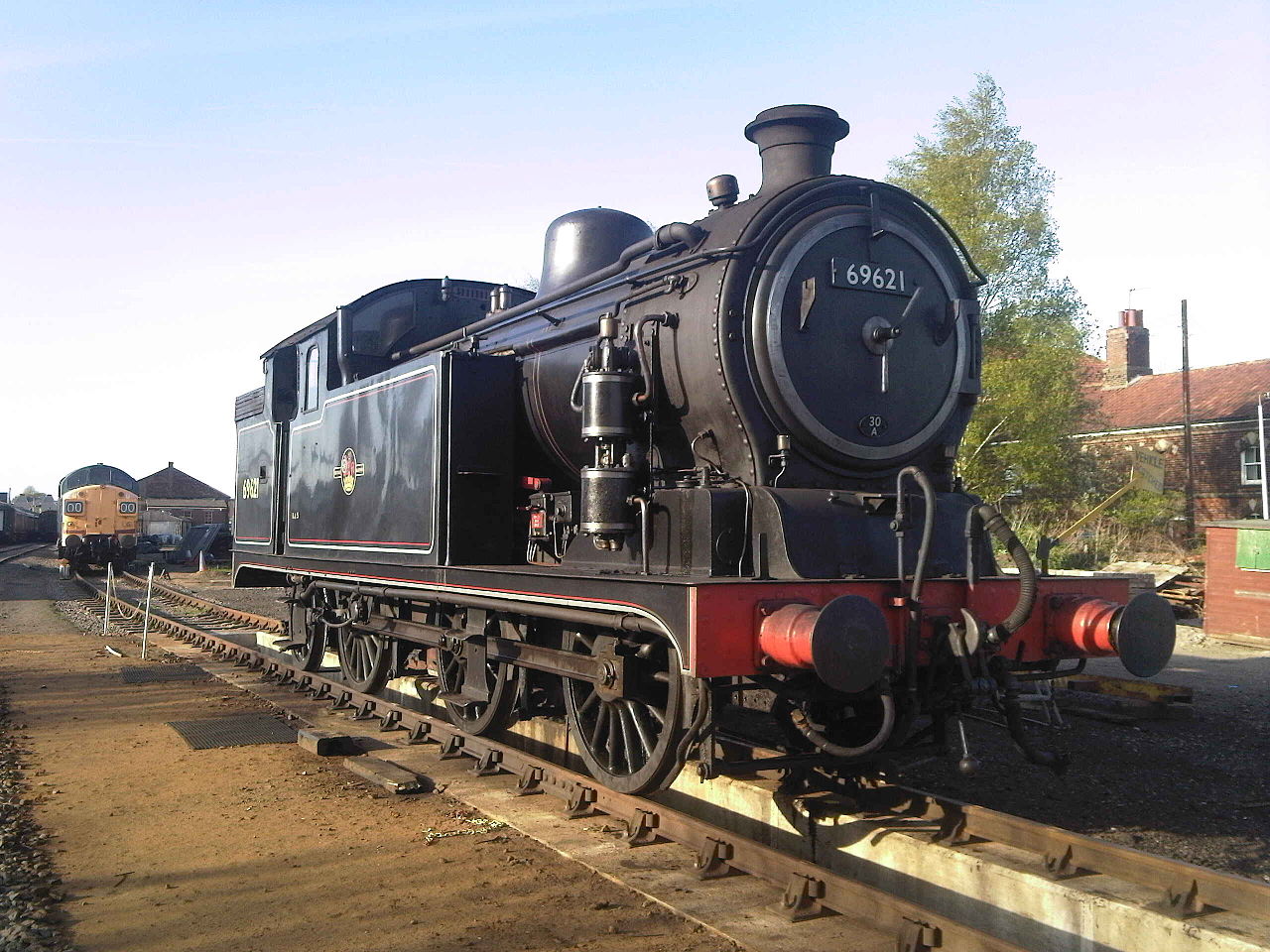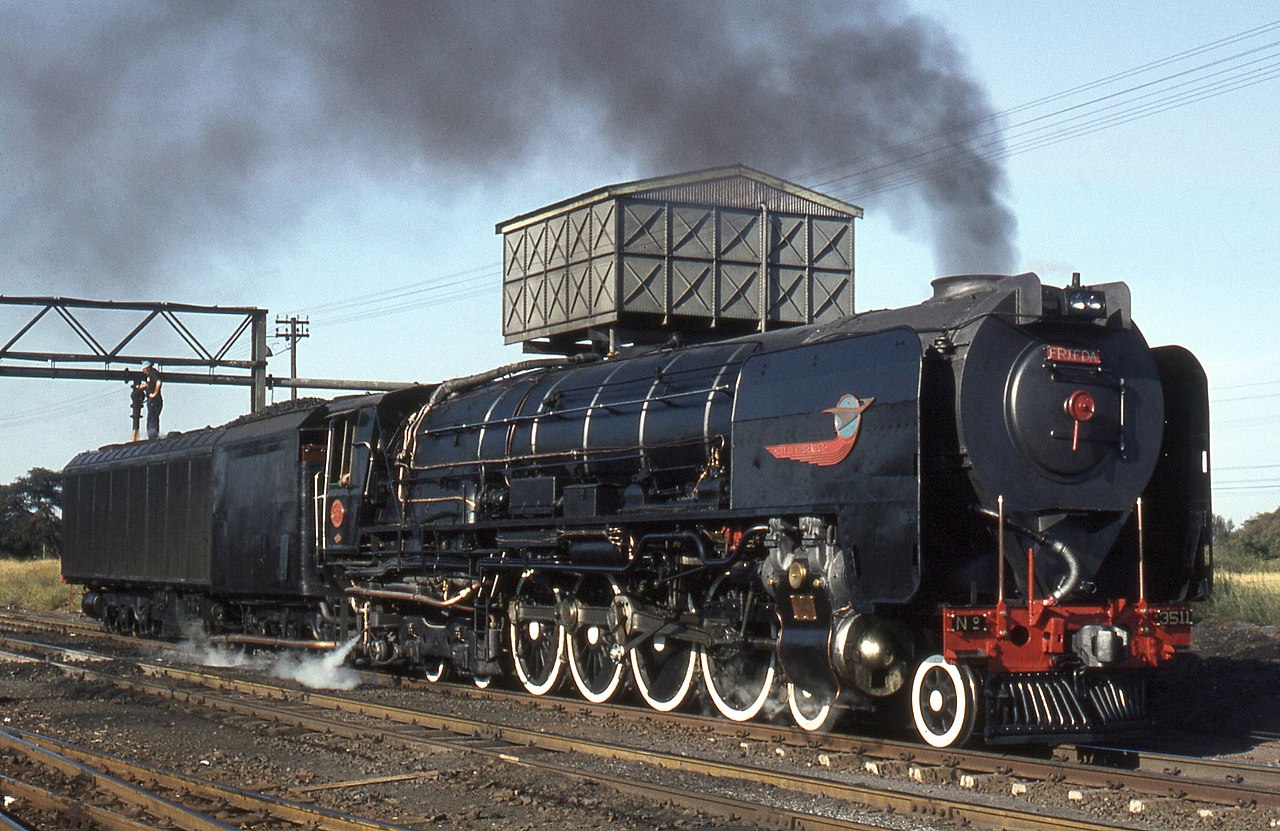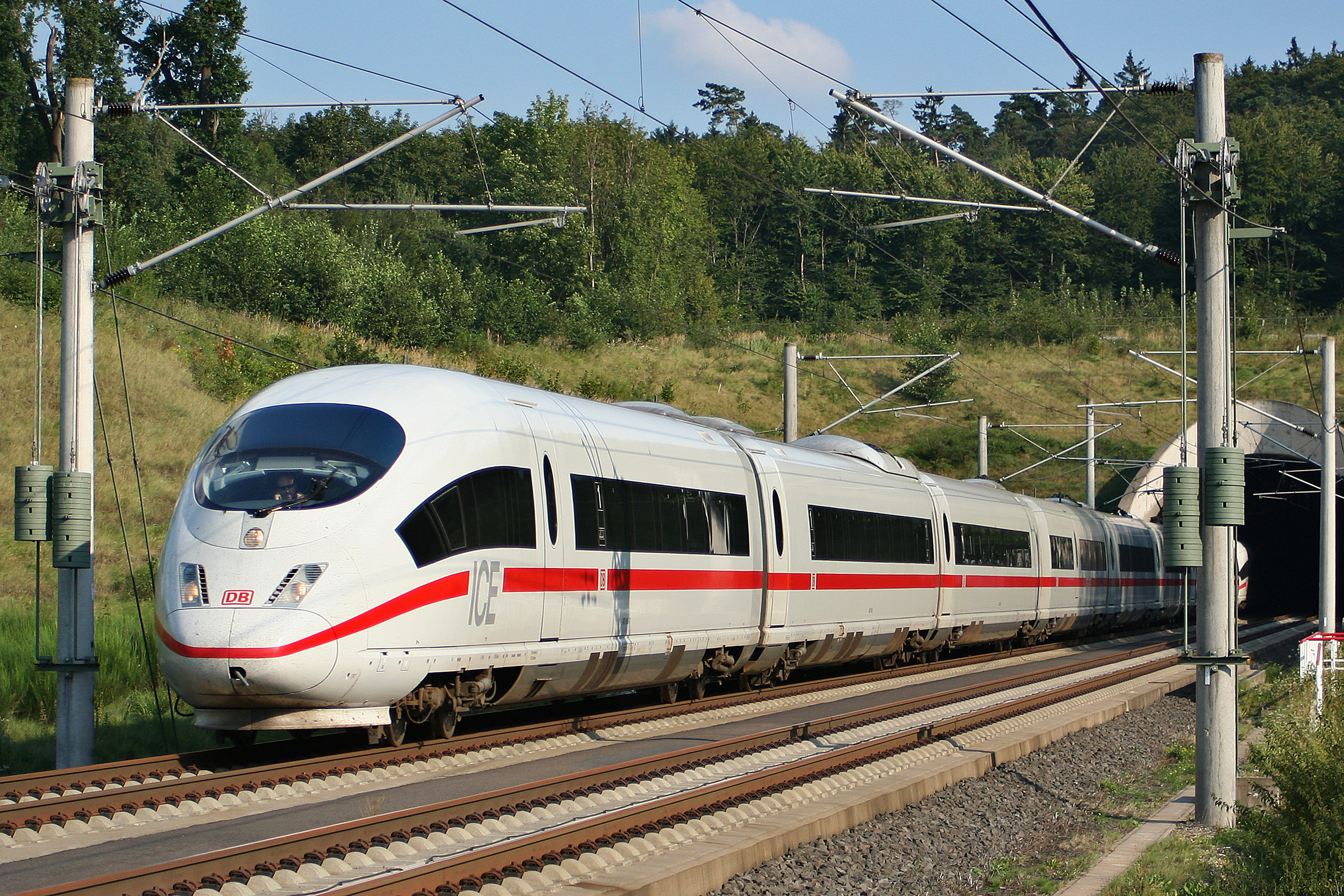Staol and Coal Powered
Staol- and Coal-powered locomotives functionally operate the same, minus a few changes to the engine to account for different fuels. They technically are interchangeable on a moment's notice, but using the opposite fuel for long periods of time can damage the internals of the locomotive.
Real quick terminology: Engine means the part of the train that contains the engine and driving wheels; Tender, also called the coal-car or staol-car, is the extra car containing the extra water and coal/staol; a locomotive is the combination of both of these parts (if applicable). Steam Engines are where Locomotive can mean two cars, whereas Diesel and Electric Locomotives are always one car.
Tank Steam Locomotives
Point Cost: 1
Manpower: 300
Vehicles: 150
Tank Steam Locomotives, sometimes shortened to Tank Engines, are locomotives that confined to a single car. Most steam locomotives have tender attached behind the engine, but tank engines have a much smaller coal-box and water-box directly a part of the engine. They are meant for short-distance travel (in the United States they were mainly used as Switchers [locomotives that remained within railyards and did the shunting and sorting] and short-line freight haulers; in the United Kingdom they were widely used for traveling between nearby towns). They are small, so they are easy to produce. Tank Engines usually pull a maximum of four to five traincars.
One Civilian Factory can produce one unit in one IRL week.
A replica of the Novelty, the first Tank Locomotive made in 1829.A Light, Medium, and Heavy Tank Engine (left to right). The Light and Heavy are "Saddle-Tank" designs, while the Medium is a "Side-Tank" design. These aren't what differentiate, just pointing it out.
Light Steam Locomotives
Point Cost: 1
Manpower: 200
Vehicles: 100
Light Steam Locomotives are small locomotives designed for short-haul or switching. In smaller nations like Switzerland, the Netherlands, or Rwanda, light engines are able to serve most, if not all, of the country. In nations like the United States or Russia, these locomotives typically serve no further than half a moderate US state. Light Locomotives typically pull a maximum of eight to ten traincars.
Two Civilian Factories can produce one unit in one IRL week.
(Left to Right) 4-2-2 [Bicycle], 0-4-0 [Grasshopper {1832}], 0-4-0 [British Four-Coupled], 0-4-0 [American Four-Coupled], 4-4-0 [American]*
*Italicized are the Whyte-Class Names. Grasshopper is the name of the engine. The Grasshopper, at the time, was considered a Light Steam Locomotive, but was only capable of hauling five cars.
Moderate Steam Locomotives
Point Cost: 1
Manpower: 100
Vehicles: 50
Moderate Steam Locomotives are medium-sized locomotives designed for regular passenger and freight service. They can serve entire nations like Germany, the UK, or New Zealand. In nations like the United States, they can typically serve one to four moderate US states. Moderate Steam Locomotives typically pull a maximum of twenty to twenty-five traincars.
Three Civilian Factories can produce one unit in one IRL week.
(Left to Right) 2-6-0 [Mogul], 4-6-0 [Ten-Wheeler], 0-8-0 [Eight-Coupled], 2-8-2 [Mikado]
Heavy Steam Locomotives
Point Cost: 1
Manpower: 50
Vehicles: 25
Heavy Steam Locomotives are large locomotives designed for heavy freight and long-duration passenger service. They can serve across multiple nations in Europe, but are impractical in small nations. In nations like the United States, they can serve approximately half of the country. Heavy Steam Locomotives typically pull a maximum of fifty to sixty traincars.
Three Civilian Factories can produce one unit in two IRL weeks.
(Left to Right) 4-8-4 [Northern], 6-8-6 [PRR S2 ST*], 0-10-0 [Ten-Coupled], 4-10-0 [Gobernador], 4-10-2 [Southern]
*The PRR S2 ST is the only example of a 6-8-6, a Steam Turbine Locomotive rather than a usual engine. Only one was built.
Superheavy Steam Locomotives
Point Cost: 1
Manpower: 20
Vehicles: 10
Superheavy Steam Locomotives are extremely large locomotives designed for long-duration heavy freight serve. They are impractical in medium- or smaller-sized nations. In nations like the United States, they have the capability to serve across the entire country, however will usually only do approximately half, leaving the other half for other locomotives. Superheavy Steam Locomotives can pull a maximum of one hundred traincars.
Five Civilian Factories can produce one unit in three IRL weeks.
(Left to Right) 4-12-2 [Union], 4-4-4-4 [Duplex PRR T1], 4-6-6-4 [Challenger], 4-8-8-4 [Big Boy], 2-8-8-8-2 [Triplex Erie RR]
Geared Steam Locomotives
Point Cost: 1
Manpower: 100
Vehicles: 50
Geared Steam Locomotives utilize a reduction gear to provide power rather than the standard drive train. It provides less speed than a normal engine due to the reducing gears, but has better torque due to the gears. Most geared locomotives have a maximum speed of 15 MPH, though there are records of some reaching 18 MPH. Geared Steam Locomotives can pull a maximum of fifteen cars.
One Civilian Factory can produce one unit in one IRL week.
(Left to Right) Class C Shay, Class B Climax, Heisler
Light Condenser Steam Locomotives
Point Cost: 1
Manpower: 100
Vehicles: 50
Light Condenser Steam Locomotives are designed for use in low-water environments. They are typically found in arid and desert nations, or in underground routes where steam locomotives are still used. They utilize a condenser system to allow for the reuse of water, rather than allowing it to puff out like a normal engine. However, because of this, they are heavier than standard Light Steam Locomotives, sacrificing some of their pulling capacity. They are also small like tank engines, Light Condenser Steam Locomotives can pull a maximum of eight traincars.
Two Civilian Factories can produce one unit in one IRL week.
(Left to Right) 0-8-0T, 0-8-2T, 2-6-2T (with traincars)
Heavy Condenser Steam Locomotives
Point Cost: 1
Manpower: 40
Vehicles: 20
Heavy Condenser Steam Locomotives are designed for use in low-water environments. They are typically found in arid and desert nations. They utilize a condenser system to allow for the reuse of water, rather than allowing it to puff out like a normal engine. However, because of this, they are heavier than standard Heavy Steam Locomotives, sacrificing a large portion of their speed and a small amount of pulling capacity. Heavy Condenser Steam Locomotives can pull a maximum of fifty to fifty-five traincars.
Three Civilian Factories can produce one unit in two IRL weeks.
(Left to Right) 2-10-2, 2-10-0, 4-8-4





